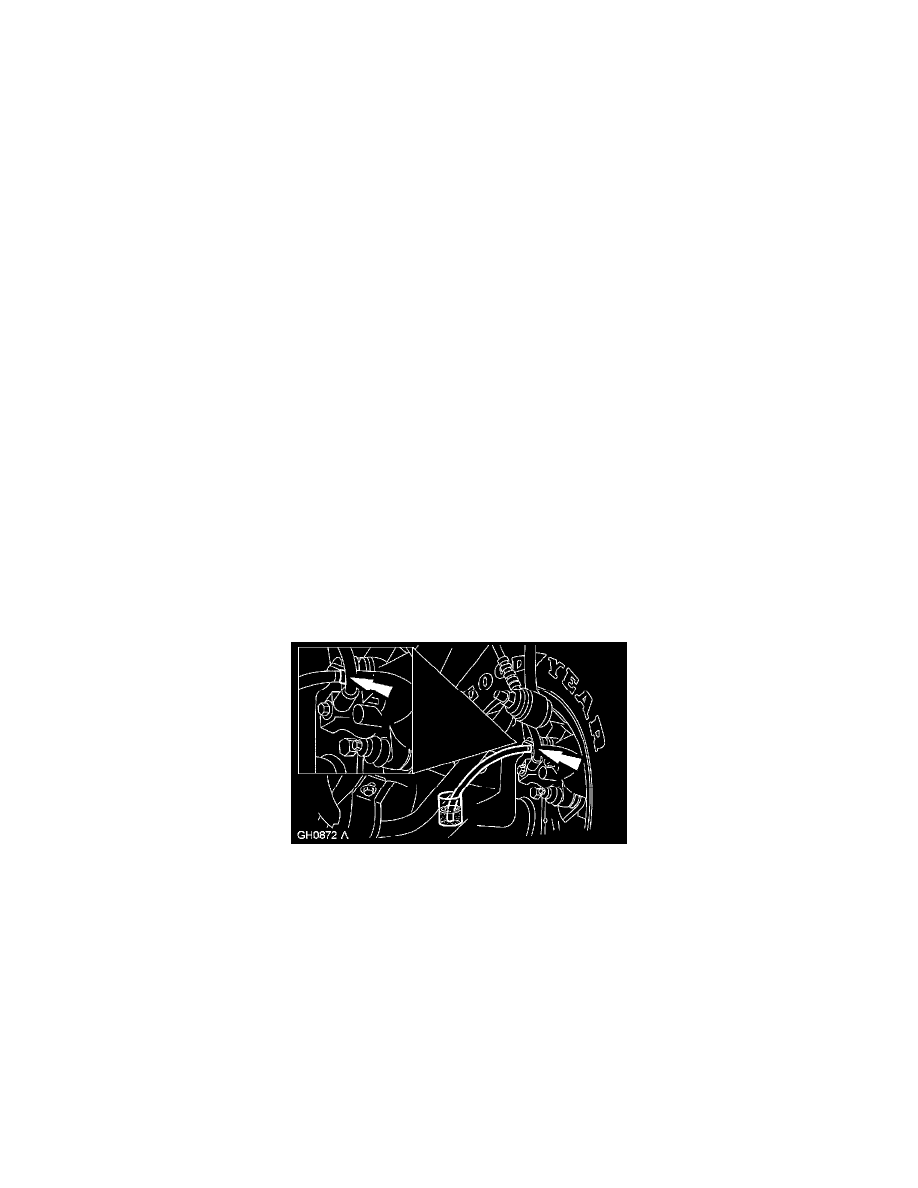Edge FWD V6-3.5L (2007)

12. Repeat Steps 7 through 10 for the LH front disc brake caliper.
Gravity
WARNING: Use of any other than approved DOT 3 motor vehicle brake fluid will cause permanent damage to brake components and will
render the brakes inoperative. Failure to follow these instructions may result in personal injury.
WARNING: Carefully read cautionary information on product label. For EMERGENCY MEDICAL INFORMATION seek medical advice.
In the USA or Canada on Ford/Motorcraft products call: 1-800-959-3673. For additional information, consult the product Material Safety
Data Sheet (MSDS) if available. Failure to follow these instructions may result in personal injury.
CAUTION: Do not allow the brake master cylinder reservoir to run dry during the bleeding operation. Keep the brake master cylinder
reservoir filled with clean, specified brake fluid. Never reuse the brake fluid that has been drained from the hydraulic system.
CAUTION: Brake fluid is harmful to painted and plastic surfaces. If brake fluid is spilled onto a painted or plastic surface, immediately wash
it with water.
NOTE: When any part of the hydraulic system has been disconnected for repair or installation of a new component, air may get into the system and
cause spongy brake pedal action. This requires bleeding of the hydraulic system after it has been correctly connected. The hydraulic system can be
bled manually or with pressure bleeding equipment.
NOTE: Performing the chassis brake bleeding procedure drives trapped air from the otherwise inaccessible lower section of the HCU valves into the
upper sections (accessible by bleeding the brakes). Subsequent bleeding removes the air from the system.
NOTE: Add clean, specified brake fluid as necessary throughout the procedure.
1. Clean all dirt from the master cylinder filler cap, then remove the cap and fill the brake master cylinder reservoir with clean, specified brake fluid.
2. If the vehicle is equipped with an ABS, connect the vehicle communication module (VCM) and scan tool into the vehicle data link connector
(DLC) under the dash and carry out the chassis brake bleeding procedure.
3. Bleed the rear disc brake calipers.
^
Place a box-end wrench on the RH rear disc brake caliper bleeder screw.
^
Attach a rubber hose to the RH rear disc brake caliper bleeder screw and submerge the free end of the hose in a container partially filled with
clean, specified brake fluid.
^
Open the bleeder screw and leave open until clear bubble-free brake fluid flows into the container.
-
Repeat for the LH rear disc brake caliper.
4. Tighten the rear disc brake caliper bleeder screws to 8 Nm (71 inch lbs).
5. Bleed the front disc brake calipers.
^
Place a box-end wrench on the RH front disc brake caliper bleeder screw.
^
Attach a rubber hose to the RH front disc brake caliper bleeder screw and submerge the free end of the hose in a container partially filled with
clean, specified brake fluid.
^
Open the bleeder screw and leave open until clear bubble-free brake fluid flows.
-
Repeat for the LH front disc brake caliper.
6. Tighten the front disc brake caliper bleeder screws to 8 Nm (71 inch lbs).
